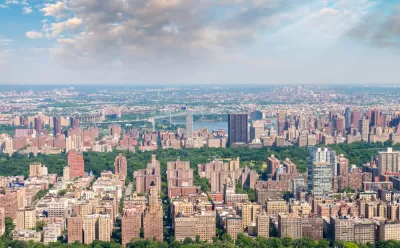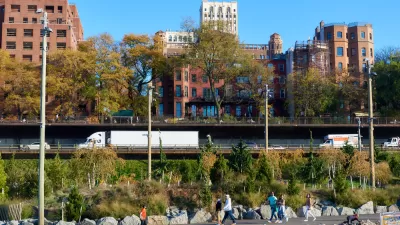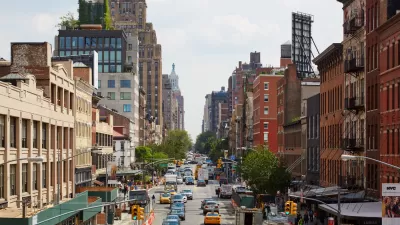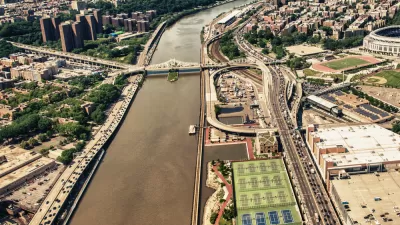New York City's Green Roof Property Tax Abatement Program has failed to take off, but if it were targeted toward the areas that need stormwater infrastructure and green spaces the most, it could be made too big to ignore.

A tax incentive for green roofs in America's most populated city been used seven times in nine years. Meanwhile the city spends millions dealing with stormwater, which can flood sewers and bring raw sewage up to the city streets. "The city is failing to take advantage of a perfectly good solution to this. By transforming barren roofs into verdant spaces, we can improve water quality, slash energy use, foster biodiversity and provide more enjoyable space," write Scott Stringer and Danielle Spiegel-Feld.
New York, like many large American cities, offers a tax credit to encourage the creation of green roofs, but that hasn't been much help. The city has only awarded its credit seven times in the nine-year existence of the Green Roof Property Tax Abatement Program. The state government allocated a million dollars a year to the city to support this initiative, but the city has struggled to use anywhere near that amount.
"The program should be restructured to provide a more targeted tax credit to a rotating group of neighborhoods that struggle with regular sewer overflows or a lack of green space," Stringer and Spiegel-Feld argue. Targeting specific neighborhoods could allow the city to offer more generous incentives and bring the roofs to the areas of the city that need them the most.
FULL STORY: Greening the city from the top down

Alabama: Trump Terminates Settlements for Black Communities Harmed By Raw Sewage
Trump deemed the landmark civil rights agreement “illegal DEI and environmental justice policy.”

Planetizen Federal Action Tracker
A weekly monitor of how Trump’s orders and actions are impacting planners and planning in America.

Why Should We Subsidize Public Transportation?
Many public transit agencies face financial stress due to rising costs, declining fare revenue, and declining subsidies. Transit advocates must provide a strong business case for increasing public transit funding.

Understanding Road Diets
An explainer from Momentum highlights the advantages of reducing vehicle lanes in favor of more bike, transit, and pedestrian infrastructure.

New California Law Regulates Warehouse Pollution
A new law tightens building and emissions regulations for large distribution warehouses to mitigate air pollution and traffic in surrounding communities.

Phoenix Announces Opening Date for Light Rail Extension
The South Central extension will connect South Phoenix to downtown and other major hubs starting on June 7.
Urban Design for Planners 1: Software Tools
This six-course series explores essential urban design concepts using open source software and equips planners with the tools they need to participate fully in the urban design process.
Planning for Universal Design
Learn the tools for implementing Universal Design in planning regulations.
Caltrans
Smith Gee Studio
Institute for Housing and Urban Development Studies (IHS)
City of Grandview
Harvard GSD Executive Education
Toledo-Lucas County Plan Commissions
Salt Lake City
NYU Wagner Graduate School of Public Service





























